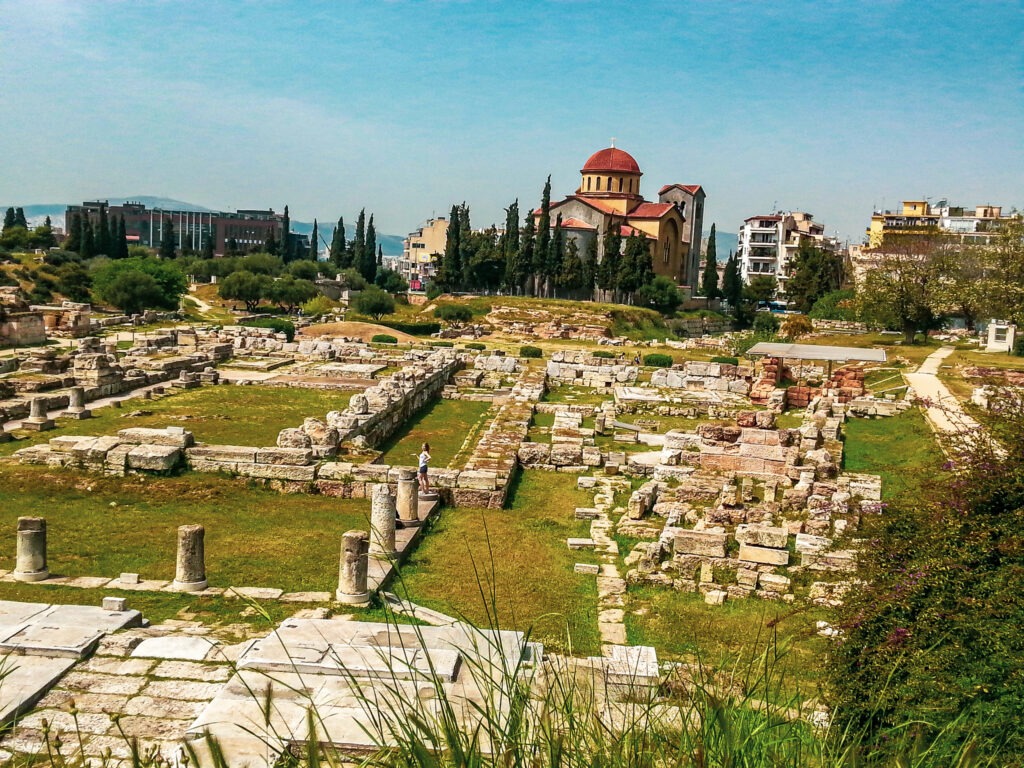Are you like me also fascinated by the lost cities and legends? This fascination comes from a complex interplay of historical curiosity, the allure of the unknown, sense of adventure and the desire to explore and understand the mysteries of the past. These stories and legends continue to captivate our collective imagination. Even today. There are countless lost cities and ancient settlements in Europe. Some are real and have been rediscovered by archaeologists, while others remain a mystery. In this article you can read about the history and discovery of a few lost cities and legends in Europe.
Table of Contents
Pompeii and Herculaneum in Italy
Italy is home to some of the most fascinating historical sites in the world. Pompeii and Herculaneum are no exception. These two cities are located in southern Italy. They tell the story of ancient Roman life before disaster struck and devastated both communities in 79 AD. From the ashes, these cities have re-emerged as some of the most spectacular and well-preserved historical sites in the world.

Eruption of Mount Vesuvius
Pompeii and Herculaneum are interlinked by their common history. They were both buried by the same cataclysmic eruption of Mount Vesuvius almost 2000 years ago. Pompeii is located on the southwest of Naples. It used to be a bustling trade centre with a population of about 20,000. It was a thriving city, known for its beautiful villas, public baths, markets, and amphitheatres. In contrast, Herculaneum, located four miles west of Pompeii, was a small seaside town with a population of around 5,000. It was known for its wealth and luxury and the home to affluent Romans who came to relax in the town’s stunning villas.
Despite their differences, both Pompeii and Herculaneum share a common fate: they were lost to time until they were rediscovered in the 18th century. Thanks to the ash and pumice that covered the cities, much of their architectural and cultural heritage has been left intact. It provides valuable insights into the everyday lives of the ancient Roman people.

History
In Pompeii you can walk the same streets as the Romans did. It’s possible to explore their homes, marvel at the frescoes and mosaics, and imagine what it might have been like to live in a prosperous ancient city. Herculaneum offers a slightly different experience. As a small town, it’s more intimate, and you can feel the relaxed vibe of a seaside resort. The street-level passageways lead you to the well-preserved historic villas.
One of the unique aspects of Herculaneum is its ancient library. Unlike modern libraries, this one contains scrolls rather than books. It was discovered in Villa di Papiri, a site named after the papyrus scrolls that were found in the residence. Many of the scrolls were undamaged, with a few needing restoration, and contemporary scholars are piecing together the life of the ancient library from the texts and scripts.
While both cities were buried in ash and pumice, and despite Pompeii being better known, many historians argue that Herculaneum is the better-preserved city. The delicate timber-based structures were wrapped in the pyroclastic flow, the volcanic ash formed around the city. The wood burnt, and changed into a carbon-rich material and therefore preserved until today.
Troy, Turkey
Buried beneath the soil of modern-day Turkey, the story of Troy is one that has been passed down for centuries. Troy was an ancient city located in northwestern Anatolia, now Turkey. It was first mentioned in the ‘Iliad,’ written by Homer in the 8th century BC. According to Greek mythology, the city was founded in 3000 BC by a prince named Ilus who gave it the name Ilion. The city was built on a hill overlooking the plain of Scamander, and it was protected by a strong wall that was said to be impregnable.

Trojan Horse
The Trojan War, which was the subject of Homer’s ‘Iliad,’ started when Paris, a prince of Troy, stole Helen, the wife of Menelaus, the king of Sparta. Menelaus called on all the other Greek kings to help him get his wife back. A fleet of a thousand ships and an army of thousands of men sailed to Troy to start a long siege that lasted for ten years. The Greeks only managed to enter the city with the help of the famous Trojan horse. A gift that the Trojans accepted. The horese was brought inside the city walls, not knowing that Greek soldiers were hidden inside.
Although the war and the city of Troy were believed to be just myths, the ruins of the city were eventually discovered in the 19th century by Heinrich Schliemann, a wealthy businessman and amateur archaeologist. Schliemann believed that the ‘Iliad’ was a true story and, after years of searching, he discovered the site of Troy in modern-day Turkey. He spent the rest of his life uncovering the ruins of Troy, which helped to establish the science of archaeology.
Apart from the ‘Iliad,’ Troy has also been mentioned in the works of ancient historians such as Herodotus, Euripides, Virgil, and Ovid. The city has become a famous tourist attraction in Turkey, attracting visitors who are interested in history, archaeology, and architecture. The UNESCO-listed ancient city of Troy is open to the public and visitors can see the remains of the city walls, the temple, the amphitheatre and the villas.
Atlantis
The legend of Atlantis is perhaps one of the most fascinating and enduring mysteries of all time. For over two millennia, people have been captivated by the tale of a mythical island that sank beneath the ocean, taking with it a highly advanced civilization. The story of Atlantis has inspired countless authors, explorers, and historians, all of whom have attempted to uncover the truth behind this intriguing legend. Unfortunately it’s not a real city but nevertheless an interesting tale to tell.
History
The earliest known record of the tale of Atlantis comes from the Greek philosopher Plato, who wrote about it in his dialogues “Timaeus” and “Critias.” According to his version of the story, Atlantis was a powerful and prosperous island nation located beyond the pillars of Hercules (the modern-day Strait of Gibraltar). The inhabitants of Atlantis were said to possess an advanced knowledge of science and technology, including electricity, aviation, and even genetic engineering.
Plato’s account of Atlantis is rich in detail, describing its grand architecture, advanced infrastructure, and beautiful gardens. He also highlights the arrogance of the Atlanteans, who ultimately angered the gods and were punished with a catastrophic natural disaster. The island was said to have sunk beneath the waves, disappearing forever.
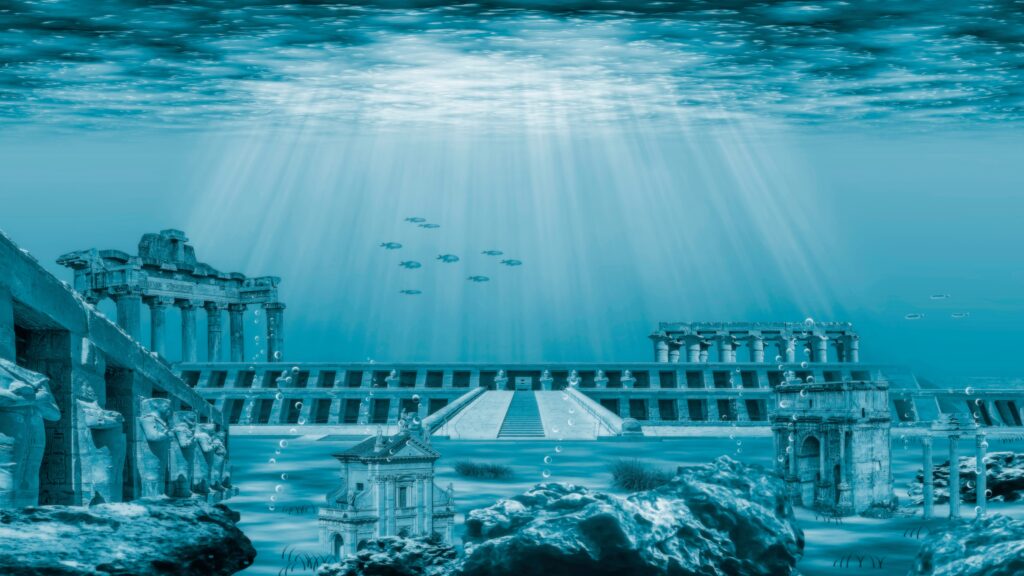
The legend continues
Many theories have been proposed over the years regarding the location of Atlantis. Some speculate it was in the Mediterranean Sea, while others believe it was in the Atlantic Ocean. Various expeditions have been launched to attempt to discover the lost city, but so far, all have proved fruitless.
Despite the lack of concrete evidence, the legend of Atlantis continues to capture the imagination of people worldwide. It has inspired works of literature, art, and film, as well as a host of conspiracy theories. Some believe that Atlantis was, in fact, a real place, while others suggest it is a purely fictional story.
One of the main draws of Atlantis is its alleged connection to ancient aliens. Many people believe that the advanced technology and knowledge of the Atlanteans could only have come from extraterrestrial sources. This theory has spawned numerous books and documentaries, as well as a cult following.
Another aspect of the Atlantis legend is its association with the lost city of Lemuria. Lemuria is said to have been another advanced civilization that existed in the Pacific Ocean, but was destroyed in a similar catastrophic event. Some people believe that Lemuria and Atlantis are one and the same, while others see them as separate but interconnected entities.
Dunwich England
As you stroll along the coastal shores of Suffolk, England, you might find yourself walking along the very spot where the lost city of Dunwich once thrived. This ancient town has earned its fairy tale-like reputation as a picturesque destination. It’s rich in history and filled with intriguing legends. The lost city of Dunwich dates back to the Saxons. It was once a bustling port town and a major commercial centre until it was swallowed by the sea.
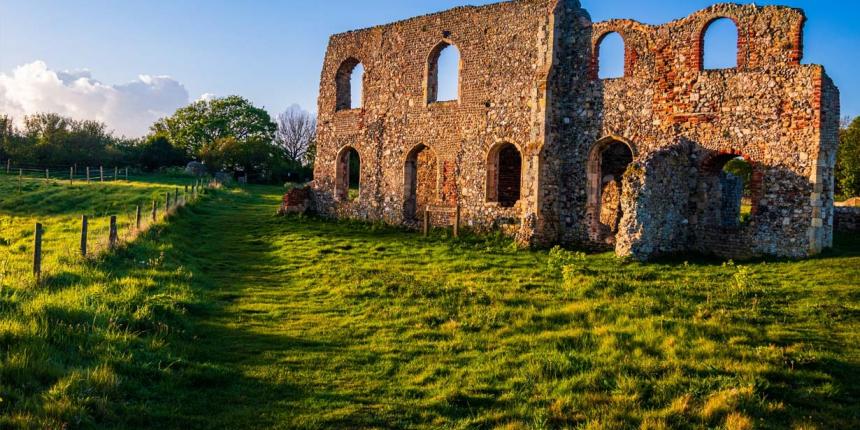
History
Dunwich enjoys a long history, dating back to the Anglo-Saxon era of the 5th century. It grew into a thriving trade hub and had strong connections with the Netherlands, Germany, Scandinavia, and France. The town also established itself as a formidable political entity, with its burgesses elected to the Parliament of England. Edward Rutherforth became a justice of the King’s Bench. After facing Viking invasions, the town eventually fell into decline, becoming a fishing village.
The events that led to the town’s ruin were not natural but rather human intervention. Dunwich’s fate took a dark turn in 1250 AD, when a massive storm hit the town. Within a few years the sea ate away its precious lands. The buildings on the coastline toppled over as the soil underneath eroded, and the people were forced to abandon their homes. For centuries, the town struggled with coastal erosion, which slowly destroyed the town’s foundations. It led to the disappearance of homes, churches, and cemeteries.
Visiting Dunwich today
Today, one can still visit the village of Dunwich that remains standing to this day. It is but a fraction of the once-great city, but it still holds secrets and enchantments that attract visitors from all over the world. The most prominent site is the stately All Saints Church, which was once a prominent landmark of the town. Now the church is standing between windswept grazing fields and nearby Minsmere Nature Reserve. The church’s front yard is littered with tombstones of Dunwich’s Medieval citizens. Besides the church, the area is perfect for bird watchers, visiting local museums, cafes, and more.
Heracleion and Canopus Egypt
The mysteries of Egypt have captivated the world for centuries, from the gravity-defying pyramids to the enigmatic Sphinx. But beyond the typical tourist attractions and famous landmarks lies a world of forgotten cities swallowed up by sand. Read about Heracleion and Canopus. These ancient urban centres were once thriving hubs of trade and culture. Today they have vanished beneath the depths of the Mediterranean Sea.
Ancient world
Located near the modern-day city of Alexandria, Heracleion and Canopus were two of the most significant cities in the ancient world. Heracleion was founded in the 8th century BC and served as the primary port for the nearby city of Naukratis. It quickly became a bustling centre of commerce, attracting merchants from all over the Mediterranean. The city reached its peak in the 6th and 5th centuries BC, with a population estimated to be around 100,000 people. Canopus, on the other hand, was known for its vast temple complex dedicated to the god Osiris. It was a centre of religious pilgrimage and attracted visitors from all over the world.
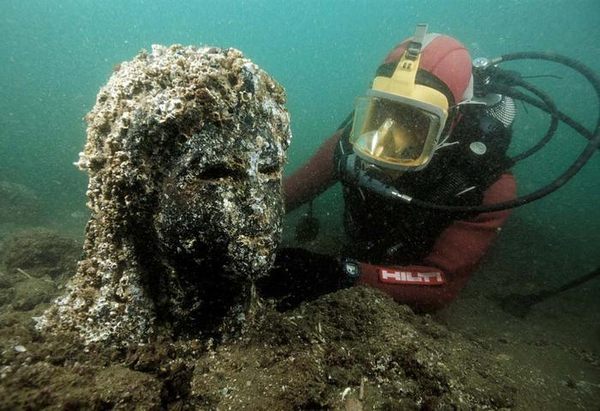
Discovery
The first mention of Heracleion and Canopus comes from the Egyptian historian Manetho in the 3rd century BC. He wrote about two cities that had once existed at the mouth of the Nile, but had been lost to the sea. Despite this early mention, no evidence of these cities was discovered until the 20th century. In 1999, French marine archaeologist Franck Goddio discovered the remains of Heracleion while searching the seabed off the coast of Alexandria. Since then, extensive excavation efforts have revealed a wealth of information about these lost cities.
The remains of Heracleion and Canopus reveal that they were once grand urban centres. The cities are known for the detailed architecture, stunning monuments, and sophisticated infrastructure. Some of the most impressive finds include a grand temple to the goddess Isis, a colossal statue of the god Hapi. There is also a network of canals that connected the cities to the Nile. The artifacts discovered at the site also suggest that these cities were significant centres of art and culture. The ruins include intricate mosaics, detailed frescoes, and even a statue of Alexander the Great.
Downfall
What caused the downfall of these once-great cities? The answer is somewhat unclear, but many scholars speculate that a combination of factors contributed to their demise. Natural disasters such as earthquakes and flooding may have played a role. Or perhaps war and political instability. According to some historians, a rise in sea levels may have also contributed to the flooding of the area, leading to the eventual submergence of the cities.
Lepenski Vir, Serbia
Hidden deep in the Danube Gorge in Serbia lies an ancient settlement called Lepenski Vir. Acknowledged as one of the most important archaeological discoveries of the twentieth century. This fortified city is a testimony to the rich and diverse cultural history of the Balkans. It was lost and forgotten for thousands of years. The remarkable features and distinctive architecture baffle researchers and historians today. With a staggering history dating back to 7000 BC, Lepenski Vir has become a gem waiting to be explored.
History
Lepenski Vir is believed to have been settled 9,000 years ago, making it one of the oldest and most enigmatic Neolithic sites in Europe. The site’s primary purpose remains controversial, but it is thought to have served both as a trading centre and a religious centre. Its architecture, consisting of monumental structures with unique decorations, is considered one of the most impressive constructions of prehistoric architecture in southeastern Europe.
One of the most outstanding discoveries from Lepenski Vir is a collection of sculptures that has a unique style of artistry and culture. These sculptures have an advanced and creative approach to the human form, something that was unusual and unique for that era. Among the sculptures are figurines of humans, animals, and fish, carved out of rocks and decorated with detailed fragments.
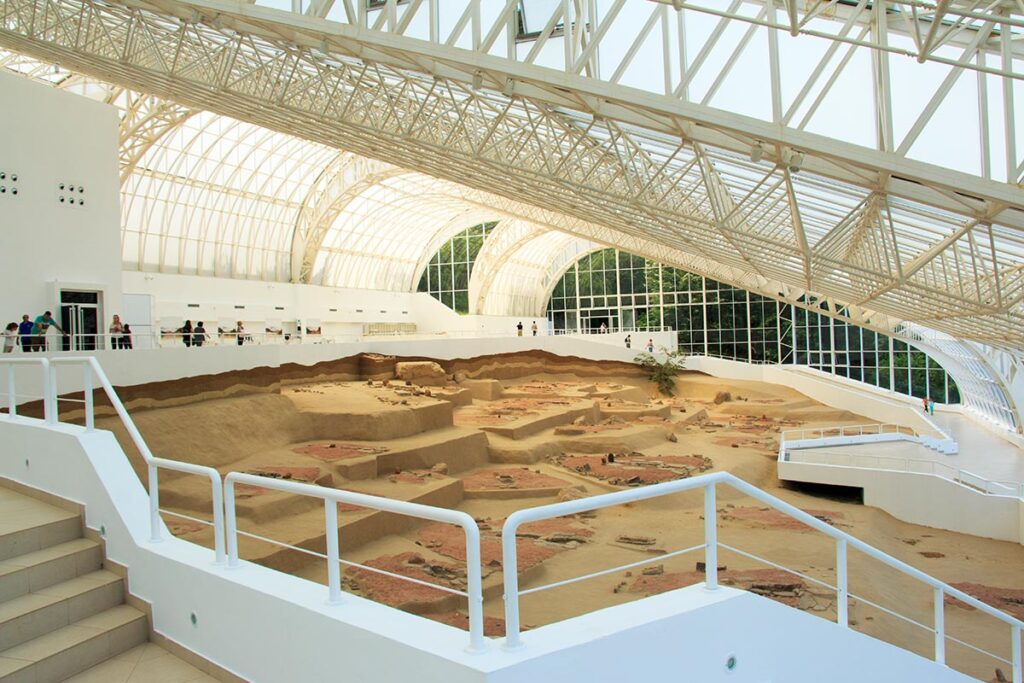
Discovering Lepenski Vir today
The site of Lepenski Vir is ranked among the top tourist attractions in Serbia and has become a pilgrimage spot for history enthusiasts and architecture lovers. Even though most of the site is not open to the public, visitors can appreciate the authentic surroundings and the many sculptures in the museum. The site is also protected and monitored, ensuring that the excavation of new artifacts is carried out to the highest professional standards.
Exploring the nearby environment
The Lepenski Vir archaeological site lies along the Danube Gorge, an area surrounded by stunning nature and breathtaking views. Visitors can enjoy a variety of outdoor activities, such as hiking, boating, and hunting. The Danube Gorge also provides the perfect camping spot for anyone who wishes to experience the surrounding environment first-hand.
Skara Brae Scotland
Scotland is a country of rich history and stunning landscapes that never cease to amaze visitors. Skara Brae is one of Scotland’s lesser-known treasures. The settlement tells the story of the people who lived here over 5,000 years ago. This lost city provides a fascinating glimpse into Scotland’s past. In this paragraph I will explore its history, architecture, and significance.
History
Skara Brae is located in the Orkney Islands, just off the north coast of Scotland. It is considered the best-preserved Neolithic village in northern Europe. The village was discovered in 1850, during a severe storm that swept away the sand dunes covering it. The village was remarkably well-preserved, and archaeologists were amazed by the level of sophistication and engineering techniques used by the people who lived there over five thousand years ago.
The Skara Brae village was built of stone, and it consists of eight clustered houses that were likely home to around 50 to 100 people. Each house had a central hearth used for cooking and warmth, a bed, shelving for storage, and a water tank with a drainage system. It is believed that the houses were interconnected by covered passageways, which created a sort of a high street for the community. Each house had a unique feature, such as a dresser, stone bed, or indoor toilet, proving that the inhabitants of Skara Brae were both practical and innovative.

UNESCO World Heritage
The village was left abandoned for several centuries, and it is believed that the inhabitants were forced to leave or were driven out by harsh weather conditions or perhaps raids. The site was lost to history and was covered by the sand dunes before its rediscovery in the mid-19th century. After its discovery, Skara Brae was extensively studied. Now it is a UNESCO World Heritage site, attracting thousands of visitors each year.
Visitors can step back in time and visit the reconstructed houses that give a glimpse into the life of Neolithic people living in Skara Brae. A visitor centre nearby displays artifacts and explanations that offer more insight into the lives of the inhabitants of the lost city. Skara Brae is a fascinating and valuable part of Scottish history and is a must-visit destination for anyone interested in archaeology, history, and ancient architecture.
Palmyra Syria
Syria, a country in the Arab world is home to some of the most ancient cities in the world. Among them is the lost city of Palmyra, which is also known as the “Bride of the desert“. The city has a rich history, fascinating architecture, and cultural heritage that attracts tourists and history enthusiasts from all over the world. Palmyra’s history has been harmed by conflicts, which have caused immense damage to the city’s structures and artefacts.
Location in Syria
Palmyra is located in the Syrian desert, around 210 km northeast of Damascus, the capital city of Syria. The city was founded in the 2nd millennium BC and reached its peak between the 1st and 3rd centuries AD. The city was a vital commercial centre, and its wealth was built on trade. Especially the trade of silk, spices, and other luxury goods between the Roman Empire and the East.
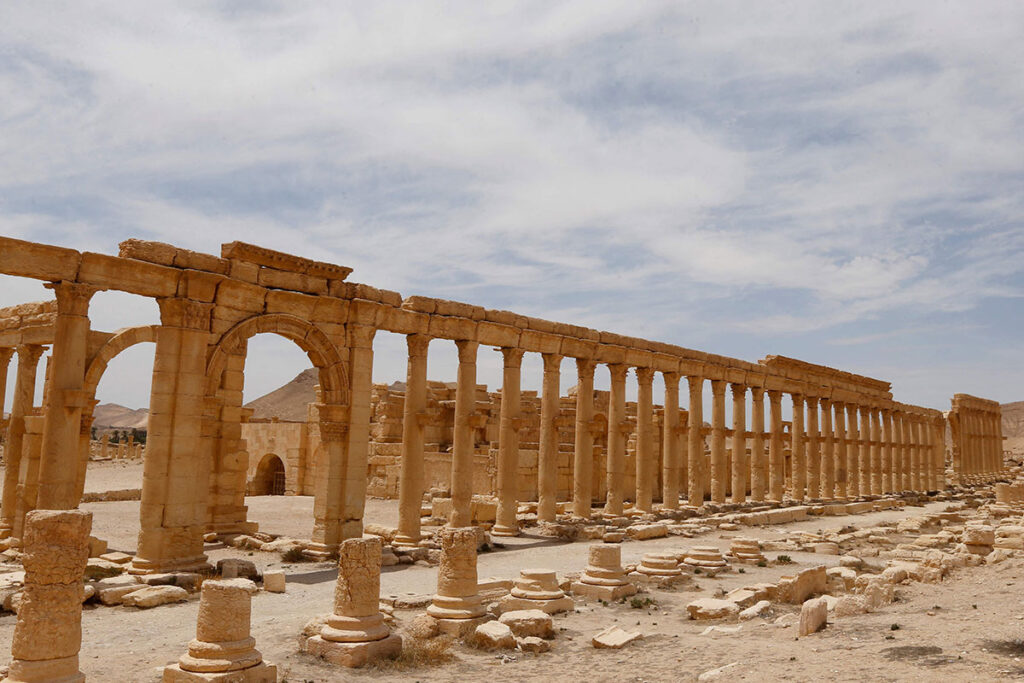
Architecture
Palmyra’s architecture is unique and breathtaking. It was a fusion of Roman, Greek, and Persian styles. Palmyra had several landmarks such as the Temple of Bel, which was erected in the 1st century AD. It’s considered to be one of the grandest structures in the ancient world. The temple was dedicated to the Syrian deity Bel and was extremely important in terms of both religious and political power. It also housed some magnificent artworks and sculptures.
Palmyra was conquered by the Roman Empire in the 1st century, and it soon became a key city on the trade route. The city was conquered several times by different empires, but it remained an essential trading hub until the 7th century. The city started to decline in the 3rd century, and by the 13th century, it was completely abandoned.
Today
In recent times, Palmyra has suffered significant damage as a result of the Syrian Civil War. The city was seized by the Islamic State (IS) in May 2015, and they extensively damaged several iconic structures like the Temple of Baalshamin and the Arch of Triumph. However, there have been restoration efforts to rebuild the lost structures and keep the heritage of the city alive.
Monumental cities to visit in Europe
Europe’s rich cultural heritage, breathtaking architecture, and magnificent art make it an unparalleled destination for history enthusiasts and architectural connoisseurs. If you’re planning a trip to Europe, be sure to include these monumental cities in your itinerary: Rome, Paris, Antwerp, Florence, Vienna, or Edinburgh in Scotland. Explore these iconic locations, relish in their historical significance, and immerse yourself in a truly enriching cultural experience. Bon voyage!
Monumental highlights in Italy
Discover the irresistible charm of Italy’s rich historical sites. Go on a journey through the monumental highlights of Bologna, one of the country’s most underrated cities. The cities history dates back to the Renaissance period, offering a cultural, artistic, and culinary experience like no other. And let’s not forget about Modena, a hidden gem where you can escape the crowds and indulge in its unique allure.
Rome presents an incredible opportunity to delve into the captivating history of the Roman Empire. Don’t miss out on this truly amazing experience when you find yourself with some spare time.
Fancy a scenic hike with an incredible view of blue pristine waters? Discover the history and architecture of Cinque Terre and unveil the hidden gems. But you might be wondering how to navigate Cinque Terre, considering each village possesses its own unique charm and allure. In this article I share valuable tips on how to get around Cinque Terre.
Experience the enchantment of Parma or visit the beautiful city Florence. The captivating capital of Tuscany. Immerse yourself in its rich art, architecture, and history, from the iconic Duomo to the renowned Uffizi Gallery.
